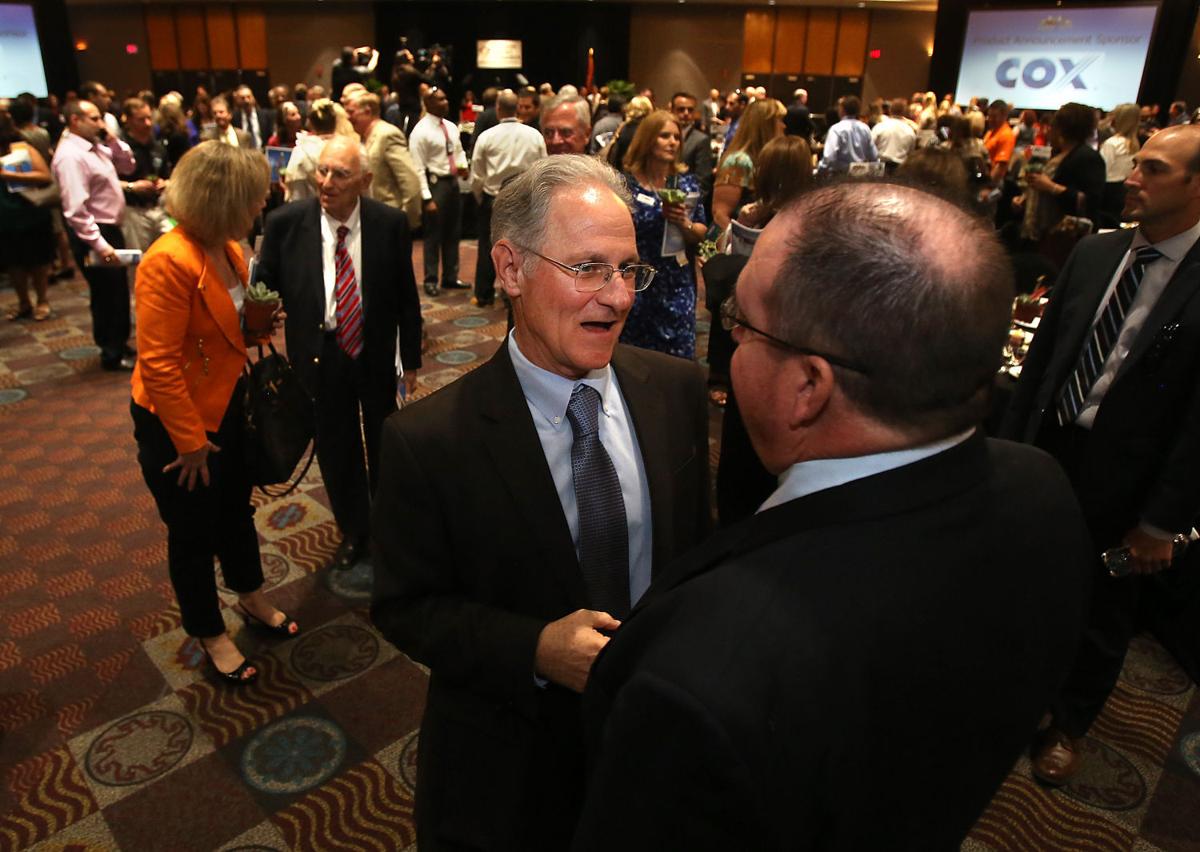It would not be your fault if you walked away from Mayor Jonathan Rothschild’s state-of-the-city speech Tuesday thinking things are going pretty darn well in Tucson.
After all, this is a city where the landfill has a new “state-of-the-art scale house, interim administration building and household hazardous waste annex!”
But after 13 snooze-inducing pages listing accomplishments like that, the mayor just hinted at the big challenges to come: job and service cuts, a sales tax increase or a combination of all. He never came close to naming the “or else” — we must do some combination of those, or else risk bankruptcy.
“Soon, we’ll be asking for financial investment,” Rothschild said near the end of his speech at the Tucson Convention Center. “And when we do, we’ll have a detailed plan — like we did with the streets bond — spelling out what core services the funds will be used for.”
It’s too bad he didn’t paint the city’s financial picture in darker strokes. Years of dubious political decisions combined with an economic meltdown plus financial hits from the state have left us in a dire situation. New scale houses at the dump aren’t going to fix it.
The projected budget deficit for the fiscal year beginning July 1 is $25.6 million, but without dramatic action that will rise steadily to around $57 million per year by 2020. Increasing pension costs are one part of the problem, but only a part.
New city manager Michael Ortega seems intent on fixing the problem for real, but so far, the city has been unwilling to tackle some of its most vexatious problems. Paying for transit is one, dealing with its golf courses is another and finding a way to maintain roads without going into debt is a third.
The example that always reminds me of the city’s unwillingness to go all the way in fixing its financial problems is “sick-leave sell-back.” This is the system under which police and fire department employees accumulate their unused sick time, year after year, and may sell it back to the city for pay.
In 2013, the city paid 22 employees more than $10,000 each in sick leave payouts. The total for that year was about $2.5 million.
In June 2014, the city finally honored state law and stopped allowing employees to spike their pensions using the sick-leave payouts. In other words, up till that point, city employees could take their accumulated sick-leave pay the last three years before retirement, and the “spiked” total would be used to calculate their pensions forever.
Those who took advantage of the illegal set-up before June 2014 are still benefiting from it. Council member Steve Kozachik wants the city to “claw back” those extra pension payouts, but that will take political daring the council may not have.
In any case, the sick-leave sell-back policy still exists. Workers can accumulate sick time over years, then get it paid out when they quit. The practice disappeared ages ago in the private sector but lingers on where public-sector unions help get public officials elected.
So on the sick-leave sell-back issue, the city has partially fixed the problem but hasn’t erased it altogether. The same can be said of the city’s financial issues overall: It has gone from about 6,200 employees about 13 years ago to around 4,900 last year — a huge cut but maybe not enough to be sustainable.
The good news is, in Tucson, unlike Detroit or some other basket-case municipalities, we have alternatives. In fact, the path toward financial stability is relatively clear.
The first step is to stop doing wasteful things we have been doing. That’s where programs like Sun Tran, the golf courses and sick-leave sell-back come into play and urgently need fixing.
The next thing is to cut, slash and burn. For now, Ortega and the city staff must assume that revenue is not going to increase and that the budget must be balanced by cutting jobs and services alone. This could be painful but temporary.
In the medium term, the city will have to sell a higher tax and appears to have all but decided to ask voters for a half-cent sales tax increase — to 2.5 percent — in November. This is projected to raise about $50 million a year. If passed, then some of the earlier spending cuts could be restored.
In his speech, Rothschild emphasized it’s his experience that “you cannot cut your way to prosperity” and asked business leaders to join him in selling the idea of a sales-tax increase to voters.
The likely way it would work, as Kozachik explained to me earlier, is that the city would commit that additional sales-tax money to a single program, such as parks and recreation. That would allow the city to remove it from the general fund and put those savings toward deficit elimination and other needs.
But those steps can’t and shouldn’t be the end. Rothschild also committed himself to putting the idea of a new election system on this year’s ballot. If it’s going to restore the rights of political minorities in Tucson — i.e. Republicans — then we should move toward a ward-only election system.
That sort of change, in turn, raises the possibility of people in outlying areas, such as the Catalina Foothills, being willing to be annexed into the city. It may be a long shot, but without the election-system changes, it’s likely impossible.
So there you have it. Tucson is in a dire financial situation, but if it follows the plan, there is a clear way out. I only wish the mayor would have said so plainly.





